Chem topic 3 PPQs got wrong
1/13
There's no tags or description
Looks like no tags are added yet.
Name | Mastery | Learn | Test | Matching | Spaced |
|---|
No study sessions yet.
14 Terms

The reactivity of the Group 2 elements Mg–Ba increases down the group. Explain why
increasing size
atomic radius increases OR more shells OR more (electron) shielding
Attraction
Nuclear attraction decreases OR (outer) electrons experience less attraction
Ionisation energy
ionisation energy decreases OR less energy needed to remove electrons
Write an equation with state symbols that accompanies the standard enthalpy change of atomisation of iodine

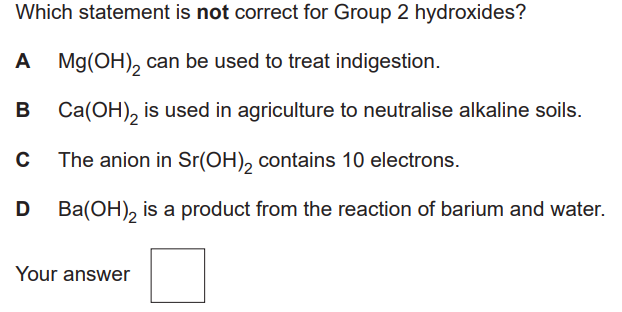
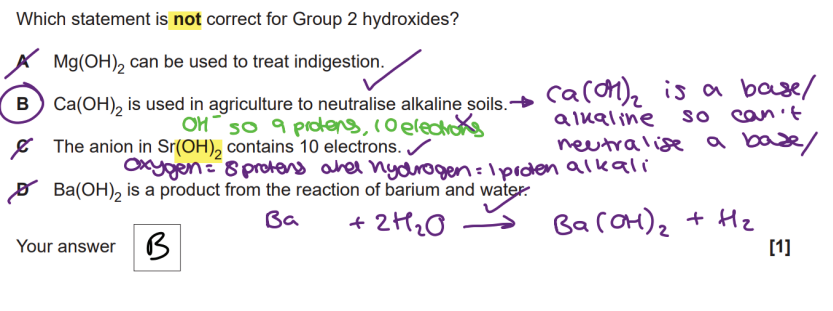

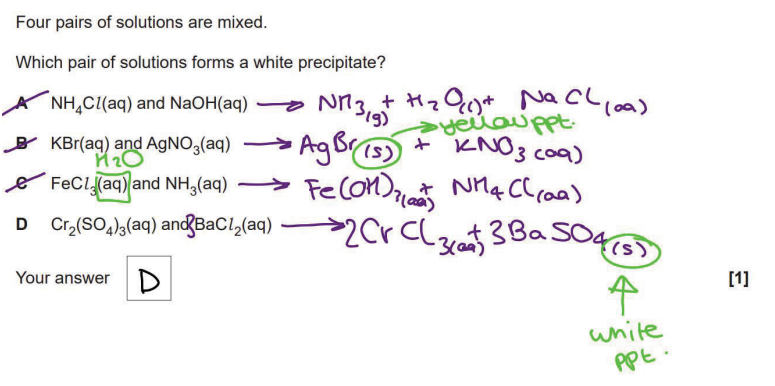
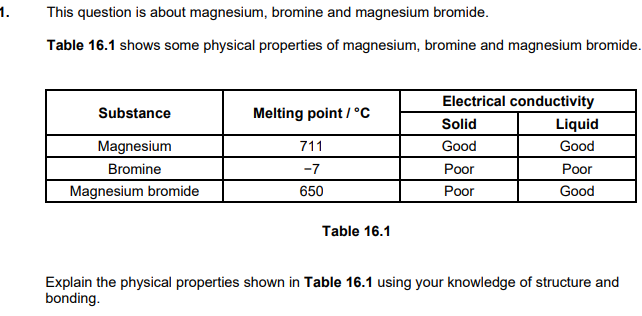
(6)

The reaction of barium with bromine is more vigorous than the reaction of calcium with bromine. Explain why. (3)
Atomic radius
Ba has a greater atomic radius than Ca OR Ba has more shells OR Ba has more shielding
Attraction
nuclear attraction is less in Ba OR outer electrons in Ba are less attracted to the nucleus OR increased distance/shielding in Ba outweighs increased nuclear charge
Ionisation energy
ionisation energy of Ba is less OR outer electrons in Ba are less attracted to nucleus OR easier to remove outer electrons in Ba
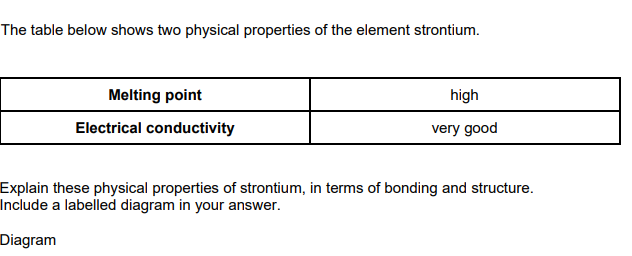
(5)
metallic bond or attraction between the electrons and positive ions/cations
bonds are strong/require a lot of energy to break AND high melting point
Delocalised electrons move AND good conductivity
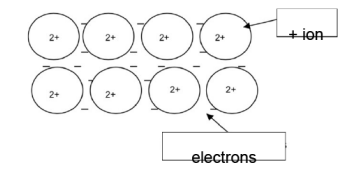
Why are silicon, carbon, oxygen and chlorine all classified as p-block elements? (1)
Highest energy electrons in a p orbital/p sub shell
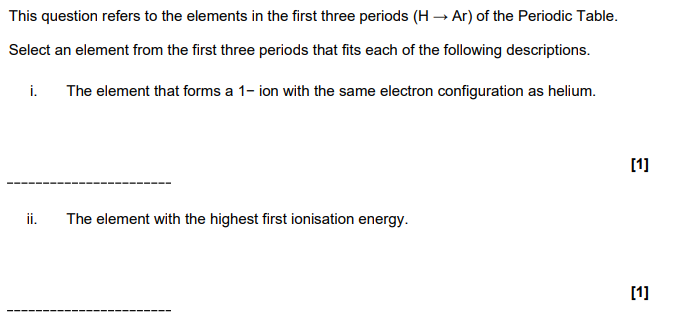
hydrogen
helium